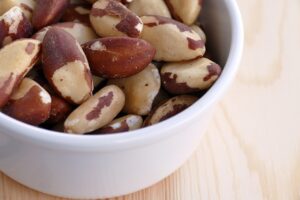There is evidence that chia seeds were first used as a food as early as 3500 B.C. Available to the Aztecs since 2600 BC, chia served as a cash crop in central Mexico between 1500 and 900 B.C. Chia seeds were eaten alone or mixed with other grains. Sometimes they were consumed as a beverage when combined with water when ground into flour. In Aztec medicine, chia is a primary ingredient. Finally, used as a base for face and body paints.
Aztec rulers received chia seeds as an annual tribute from conquered nations. The seeds were offered to the Gods during religious ceremonies. According to records kept by the Aztecs and Spaniards, chia was traditionally cultivated in a region stretching from north-central Mexico to Guatemala. A second, smaller area of cultivation covered Nicaragua and southern Honduras. The Salinan, Cahuilla, Sostanoan, Paiute, Maidu, and Kawaiisu indigenous peoples of the western United States used a different species of chia, called Salvia columbariae, for use in food and for medicinal purposes.
AN ANCIENT RECIPE
Pinole is a type of gruel you can still find on menus today. This was one of many dishes the Aztecs made with chia. To prepare it, the seeds were roasted, milled into flour, and then combined with corn flour and water. This porridge was eaten as-is. They could also shape the chia into cakes and cooked over an open fire.
THE BEAUTY SEED
The Aztecs pressed chia for its oil, which they used to heal and moisturize the skin, and also used it as a base for face and body paints.
PHYTONUTRIENTS
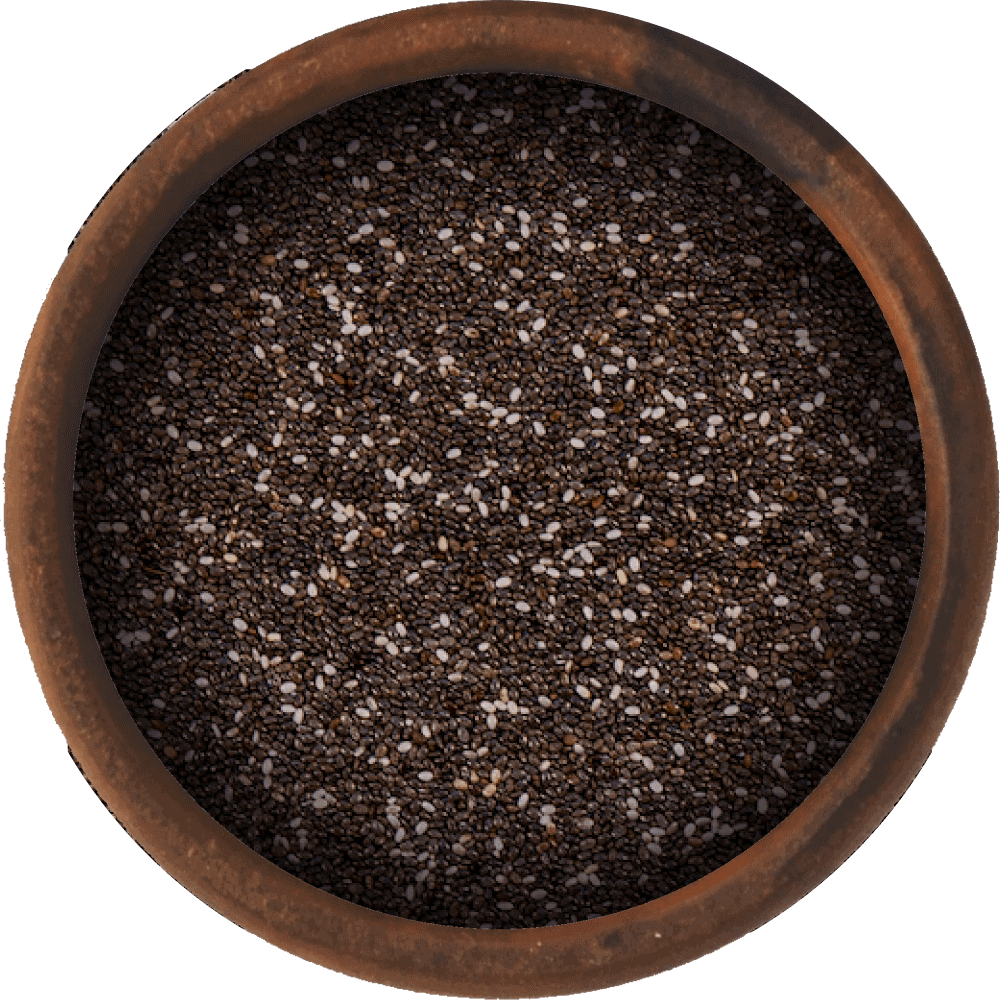
Chia is famous for its phytonutrients, plant chemicals that contain protective, disease-preventing compounds. The phytonutrients found in chia include quercetin, kaempferol, myricetin, chlorogenic acid, and caffeic acid. Their role is to protect the plant from disease, injuries, insects, drought, excessive heat, ultraviolet rays, and poisons or pollutants in the air or soil. In other words, they form part of the plant’s immune system. And what they do for plants, they can do for us. Although phytochemicals are not yet classified as nutrients, researchers have identified these plant chemicals as important guardians of good health. They prevent disease and proven in studies to ward off the four leading causes of death in Western countries. Specifically, the four leading causes of death are cancer, diabetes, cardiovascular disease, and hypertension.
USE AS AN ANTI-ALLERGENIC FOOD
Chia is remarkably anti-allergenic, meaning that most people (even those sensitive to several other foods) have no problem consuming it. A 2003 study performed at Southampton University and King’s College London, found that chia has no allergy-associated properties. A study of the history of chia seeds shows no allergic reactions caused by chia. Furthermore, the researchers were unable to find any verifiable cases of patients with allergies to chia seeds.
HOW TO HARVEST CHIA SEED
The harvesting of chia mostly happens with machines but it still also happens with hands. After the chia plant flowers, the edible seed starts growing. The seed heads, on which the flowers form, have a removal process than is struck to release the tiny seeds. Finally, the bulk chia seeds will be into sacks or other storage containers for subsequent cleaning. There is no use of heat or chemicals in this process.
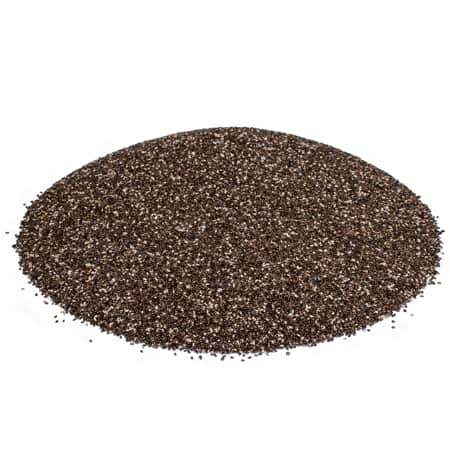
THE HISTORY OF CHIA IN COMMERCIAL PRODUCTION
Chia grows best on latitudes 15 degrees on either side of the equator. Additionally, within 23 degrees on either side of the equator chia thrives. As such, chia grows commercially in many countries, including Bolivia, Argentina, Ecuador, and Australia. Currently, the largest crop grows in Bolivia and Australia. It is the countries of Mexico, Nicaragua, and Guatemala that produce chia commercially on a much smaller scale.
CHIA HAS NOT BEEN GENETICALLY MODIFIED
If a food carries the label of a GMO it means that it has completed alteration through genetic engineering. It sounds shocking, but, according to the National Agriculture Statistics Board annual report for 2010, 93 percent of the planted area of soybeans, 93 percent of cotton, 86 percent of corn, and 95 percent of sugar beets in the United States were genetically modified varieties. Furthermore, genetically modified food plants took up 135 million hectares of cropland throughout the world (in 2010). The Grocery Manufacturers of America estimated in 2003 that 75 percent of all processed foods in the U.S. contain a genetically modified ingredient. Chia is not one of these food ingredients.
Above all, the seed grows well, ships well, and stores well. Therefore, it does not need to be altered to make it easier to grow or use. Genetically modified foods are newcomers to the world’s food supply. The first altered food was created in 1994 by a subsidiary of agribusiness giant Monsanto. The genetic moderation of a tomato creates a fruit called Flavr Savr that ripens without softening. The result is greatly reducing natural spoilage and bruising during shipping and storage. While the United States and Canada do not label genetically modified foods, other governments require food sellers to do so. These countries include the European Union, Australia, Japan, and Malaysia.
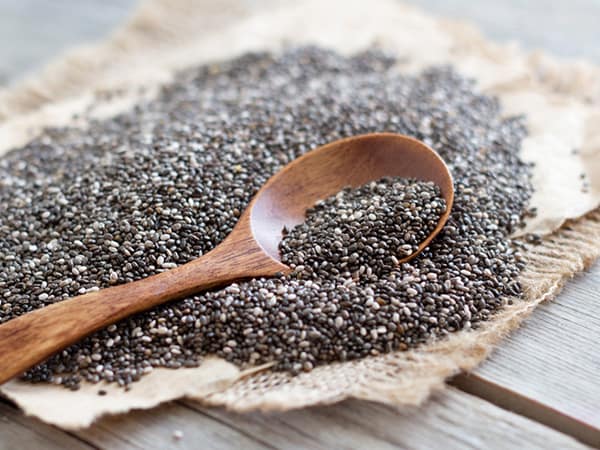
CHIA IS GLUTEN-FREE!
Currently, in 2021, a gluten-free diet is likely the most dominant diet trend of the past few years. Unlike cereal grains such as wheat, spelled Kamut, rye, and barley, chia contains no gluten. This makes it ideal for people who have celiac disease and gluten sensitivities. In the milling process, the high protein “chia flour” will find use in gluten-free baking.

Customers have more interest online in chia seeds and understanding the history of chia seeds.
CHIA PET TRIVIA
Did you ever wonder how the chia pet started?
- Terracotta chia planters, in the shape of various animals and people, were long a tourist item. In various central and southern Mexican cities they have always been a common sight.
- Chia Pet® is the registered trademark belonging to Joseph Enterprises, Inc., of San Francisco, the manufacturers and originators of the Chia Pet.
- Joseph Pedott was a marketing professional at the start of his career. Upon seeing the original “chia curios” in Mexico, he decided to create an American version. Eventually, named ‘Chia Pet’.
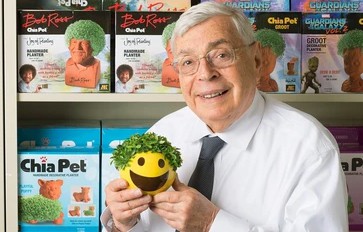
- The name Chia Pet was first used on September 8, 1977.
- The first Chia Pet wasn’t actually a companion animal, but a man. Chia Guy was created on September 8, 1977.
- The first nationally-marketed Chia Pet was the ram, marketed and distributed in 1982.
- Among the most popular Chia Pets are craze bunnies, frogs, hippos, kittens, pigs, puppies, and turtles.
- Chia Pets use the same type of chia seed that is edible and healthy.
- Joseph Enterprises also makes Chia Head, many of various American presidents.
- Approximately 500,000 Chia Pets sell through many channels each year.
- Chia Pets are only sold in stores during the winter holidays.
- Chia Pets and Chia Heads are handmade pottery items. It takes an entire year to produce enough Pets and Heads for one holiday season.
- Chia pottery was originally made in Mexico. Today, production of the pottery components is located in China.
- Joseph Enterprises, Inc. also holds the patent for the Smart Clapper”, whose slogan is “Clap On! Clap Off!”
Special Thanks To Words From William Coates and Chia Pet.
Article By Matthew Baron


